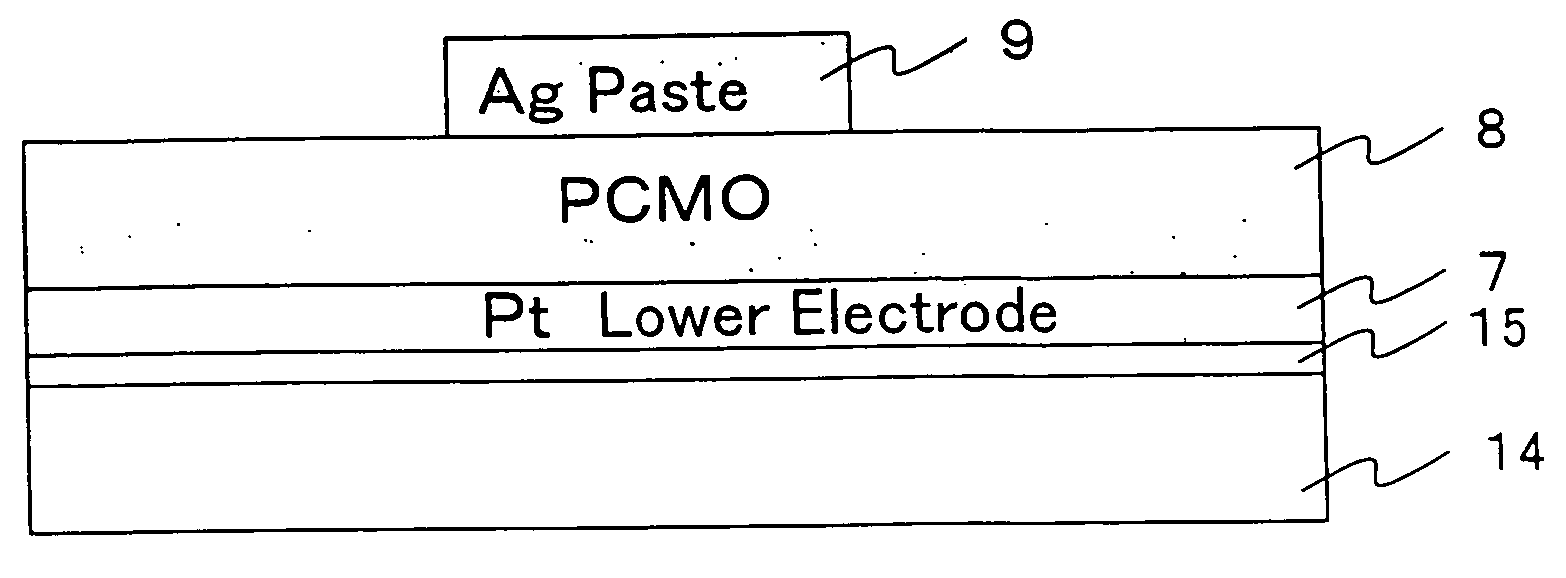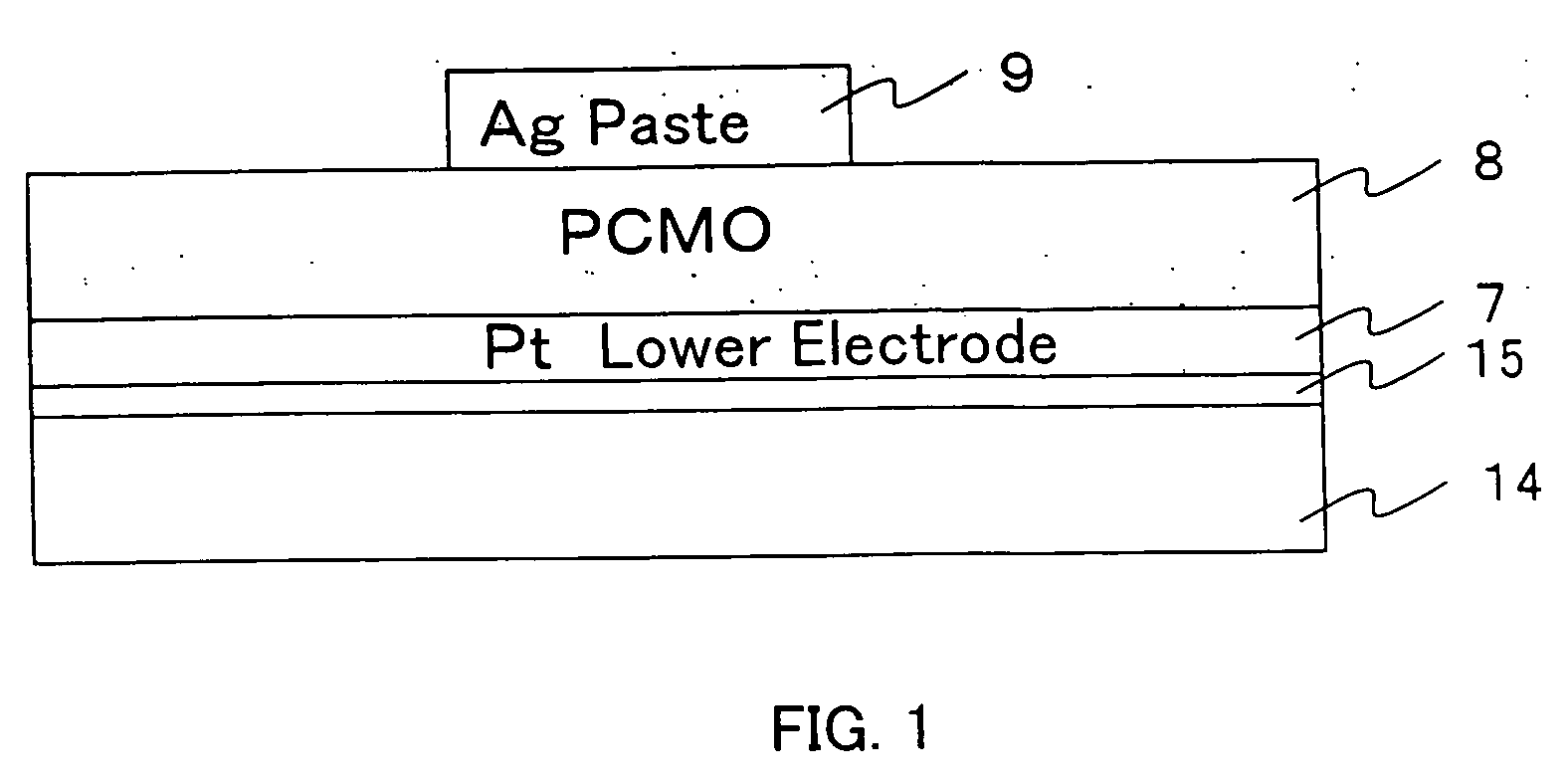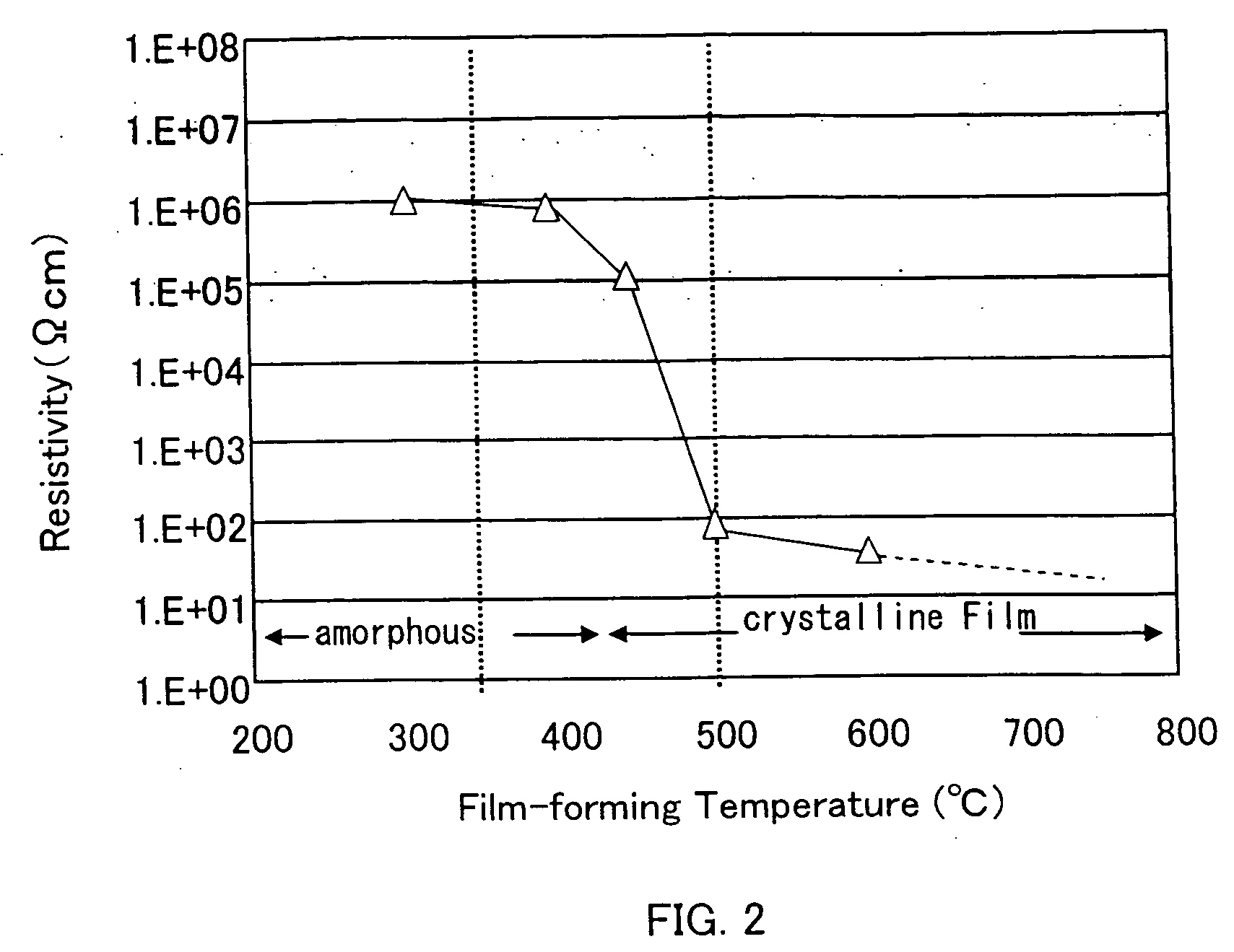Nonvolatile semiconductor memory device
a semiconductor and memory device technology, applied in semiconductor devices, digital storage, instruments, etc., can solve the problems of high cost and destructive reading, inferior micronization and high-speed operation of ferromagnetic tunnel effect elements, and inferior high-speed operation since thermal operation, so as to reduce the substantially effective contact area, increase the resistance of the variable resistor, and reduce the effect of substantially effective contact area
- Summary
- Abstract
- Description
- Claims
- Application Information
AI Technical Summary
Benefits of technology
Problems solved by technology
Method used
Image
Examples
Embodiment Construction
[0026] One embodiment of the nonvolatile semiconductor memory device according to the present invention (hereinafter, appropriately referred to as “the inventive device”) will be described on the basis of drawings.
[0027]FIG. 1 is a cross-sectional view illustrating a basic structure of a variable resistive element 10 as a nonvolatile memory element for use in the inventive device 100. The variable resistive element 10 basically has a stack structure formed by sequentially stacking a lower electrode 7, a variable resistor 8 with a perovskite-type crystal structure, and an upper electrode 9. The variable resistive element 10 is further characterized in that the upper electrode 9 is a particulate electrode configured of a particulate conductor aggregate. In the following, the variable resistive element 10 will be described in detail.
[0028] The variable resistive element 10 having the basic structure illustrated in FIG. 1 is formed as follows. First, a TiO2 layer 15 as a barrier conta...
PUM
 Login to View More
Login to View More Abstract
Description
Claims
Application Information
 Login to View More
Login to View More - R&D
- Intellectual Property
- Life Sciences
- Materials
- Tech Scout
- Unparalleled Data Quality
- Higher Quality Content
- 60% Fewer Hallucinations
Browse by: Latest US Patents, China's latest patents, Technical Efficacy Thesaurus, Application Domain, Technology Topic, Popular Technical Reports.
© 2025 PatSnap. All rights reserved.Legal|Privacy policy|Modern Slavery Act Transparency Statement|Sitemap|About US| Contact US: help@patsnap.com



